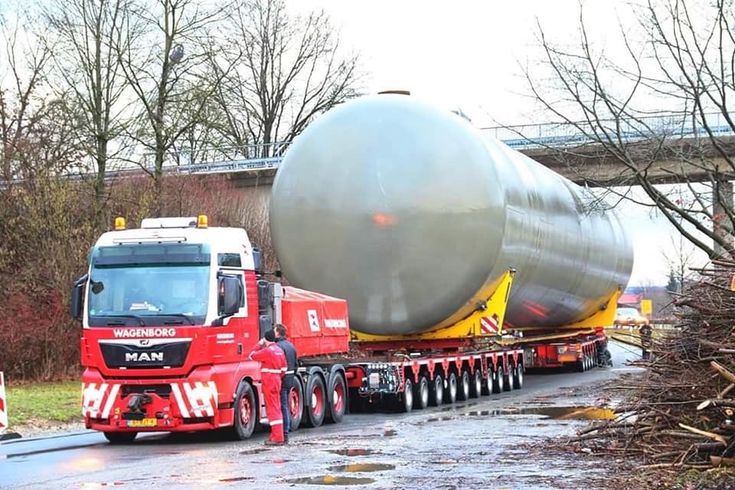When it comes to oversize loads, most carriers are used to thinking in state lines. But when you’re hauling something that breaks length, width, or weight thresholds, it’s not just about crossing borders—it’s about navigating through 2,500+ different permitting jurisdictions, each with their own take on what’s allowed, when, and how. And here’s the real kicker: the difference between a clean run and a compliance disaster can often come down to one thing—geography.
At Reliable Permit Solutions, we specialize in helping trucking professionals like you decode the chaos of multi-jurisdictional compliance. But even with expert help, one truth remains: the responsibility to verify permit accuracy always falls back on the carrier. That’s why understanding the urban-rural divide in oversize load trucking is no longer optional—it’s strategic.
The Urban Maze: Tight Squeezes and Tighter Rules
Urban environments were never designed for the kind of width, weight, and length that oversize loads demand. You’re not just hauling freight—you’re negotiating an obstacle course of restrictions, many of which change by the hour, by the block, or even by the event calendar.
Here’s what makes cities especially challenging:
- Bridge Clearances & Load Limits: Unlike rural stretches, urban bridges often have lower vertical clearance and stricter weight tolerances. Miss this detail, and you’re facing reroutes and damage liability.
- Time-of-Day Restrictions: Many city permits require night moves or limit access during peak traffic hours. You may get the permit, but you’ll need to tweak your entire schedule around it.
- Special Events & Pop-Ups: Street festivals, parades, construction zones—city permits are often dynamic, changing based on temporary events that rural permits never have to deal with.
- Escort Requirements: Municipalities may demand extra escorts, completely separate from state regulations. Some even require local police coordination.
- Noise Ordinances: Think it’s just about weight and length? In residential urban areas, your oversized rig might be restricted based on decibel output, especially during overnight hours.
This kind of fragmented policy means you can’t rely on a one-size-fits-all approach. You need permit experts who know the local nuances—and even then, double-checking is on you.
The Rural Reality: Distance, Detours, and Departmental Layers
Now flip the map. Out in the countryside, wide-open spaces may seem like a dream for oversize load trucking, but don’t get too comfortable. Rural jurisdictions come with their own quirks—and if you’re not tuned into them, they can cause just as much havoc.
Here’s what sets rural permitting apart:
- County-Level Permit Variability: In rural zones, oversight often falls to counties or even townships. You might need three different permits just to get through a single farming district.
- Secondary Road Infrastructure: Many rural roads weren’t built for heavy hauls. Think narrow shoulders, aging bridges, and limited signage. An overweight permit might allow the load, but the road might not support it.
- Seasonal Considerations: Spring thaw? Expect road bans. Harvest season? Watch out for agricultural traffic regulations. These seasonal restrictions directly affect rural route permits.
- Limited Detour Options: If something changes mid-route, your detour options in rural zones are usually few and far between. Planning has to be bulletproof from the start.
- Jurisdictional Hand-Offs: A single rural route could cross township, county, and state lines—all with their own permit formats and enforcement quirks.
Reliable Permit Solutions knows how to stitch these moving pieces into a seamless plan, but even the best permit company can’t predict that flooded county road or last-minute route closure. That’s why we always recommend carriers remain alert and have contingency plans built into their strategy.
A Load by Any Other Route: Comparative Case Study
Let’s say you’re hauling a 120-foot wind turbine blade from the Midwest to the West Coast. The same oversize load will trigger drastically different permit requirements depending on whether the route hits major metro corridors or sticks to rural bypasses.
- On an urban-heavy route, you might need:
- 4+ escort vehicles
- Police coordination in multiple cities
- Overnight-only movement windows
- Multiple wide load permits that account for turn radius in tight intersections
- On a rural route, expect:
- Road use restrictions during spring thaw
- Approval from several different county road departments
- Bridge analysis reports for structurally deficient spans
- Potential for miles-long detours if you hit a closure
Same load. Completely different playbook.
The Digital Divide: Tech in Permitting
One final, often overlooked layer is how urban and rural zones handle digital permitting systems. Metropolitan areas tend to have integrated, sometimes real-time permit portals. Some even feature digital escort tracking or live traffic routing integration.
Meanwhile, in rural jurisdictions, you might still be working with faxed forms and offline approval systems. The inconsistency can slow you down if you’re not prepared—and that’s where a seasoned permit company like Reliable Permit Solutions brings serious value.
Strategic Planning with Localized Expertise
If there’s one message to take from all of this, it’s that oversize loads challenge your equipment and knowledge of locality. Urban and rural routes are stylistic choices and represent fundamentally different compliance landscapes.
Your best bet? Build a flexible, locality-driven permit strategy. Lean on permit experts, but always verify. Every jurisdiction adds a puzzle piece, and it’s on you to make sure it fits.
At Reliable Permit Solutions, we’ve helped thousands of carriers decode this complexity across all 2,500+ jurisdictions. We’re getting you a permit and the right one for where you’re going, when you’re going, and how your oversize load is configured.
Because when it comes to compliance, the details are red tape and the roadmap.

